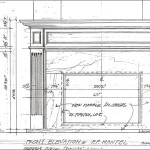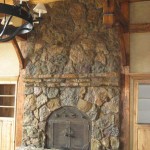Fireplace Pipe Heaters: A Comprehensive Guide
Fireplace pipe heaters, also known as chimney pipe heaters, are a unique and effective heating solution for those with fireplaces. They harness the heat generated by a burning fire and distribute it throughout a room or even an entire home. These devices offer a cost-effective and environmentally friendly way to supplement your existing heating system, providing a more comfortable and efficient way to keep warm during colder months.
How Fireplace Pipe Heaters Work
Fireplace pipe heaters work by utilizing the natural convection process. As the fire in your fireplace burns, it produces hot air that rises up the chimney. A pipe heater is installed inside the chimney, strategically placed to capture this rising hot air. The heated air then flows through the pipe and into a heat exchanger, where it transfers its thermal energy to the surrounding air before being exhausted outside. This heated air is then circulated throughout the room or house, creating a more comfortable and evenly distributed temperature.
Types of Fireplace Pipe Heaters
Fireplace pipe heaters come in various designs and configurations, each with its own set of pros and cons. Some common types include:
- Direct Vent Heaters: These heaters connect directly to the fireplace chimney and exhaust hot air into the room. They are relatively simple to install and offer the most efficient heat transfer.
- Indirect Vent Heaters: Indirect vent heaters utilize a closed loop system, where heated air is cycled through a series of ducts and circulated throughout the house. This type of heater provides greater heat distribution but can be more complex to install.
- Fan-Assisted Heaters: These heaters include an integrated fan that helps to circulate the heated air more effectively, allowing for quicker heating and a broader coverage area.
Benefits of Fireplace Pipe Heaters
Fireplace pipe heaters offer numerous benefits, making them an attractive alternative or supplement to conventional heating methods:
1. Cost-Effectiveness
Fireplace pipe heaters utilize the free heat generated by a burning fire, reducing reliance on expensive heating fuels such as gas or electricity. This can significantly lower your heating costs, especially if you frequently use your fireplace.
2. Environmental Friendliness
By harnessing the heat from a burning fire, fireplace pipe heaters minimize energy consumption and reduce greenhouse gas emissions. They are a more sustainable and eco-conscious heating option compared to traditional heating systems.
3. Enhanced Comfort
Fireplace pipe heaters can provide a more pleasant and comfortable heating experience. The warm air they generate can be evenly distributed throughout the room or house, eliminating cold spots and creating a more balanced temperature.
4. Versatility
Fireplace pipe heaters can be adapted to various fireplace types, including traditional masonry fireplaces, freestanding stoves, and even gas fireplaces with optional vents. They can also be used to heat a single room or multiple rooms, depending on the model and installation.
Considerations When Choosing a Fireplace Pipe Heater
Before purchasing a fireplace pipe heater, consider several factors to ensure you select the best option for your needs:
- Size and Capacity: Choose a heater that is appropriately sized for the space you wish to heat. Consider the size of your fireplace, the chimney diameter, and the desired heating capacity.
- Installation Requirements: Determine the ease of installation and whether it requires professional assistance. Consider the chimney configuration, ductwork requirements, and any necessary modifications.
- Safety Features: Look for heaters with safety features such as automatic shut-off mechanisms, overheat protection, and flame detection systems.
- Energy Efficiency: Compare the energy efficiency ratings of different models to ensure you are choosing a heater that maximizes heat transfer and minimizes energy usage.
- Budget: Fireplace pipe heaters come in a range of price points. Determine your budget and select a model that fits your financial constraints.
By carefully considering these factors and researching different models, you can find a fireplace pipe heater that meets your specific needs and enhances your home's heating efficiency and comfort.

Flue Pipe Chimney Greenstone Soapstone Masonry Heaters

Imperial 5 In Black Steel Stove Pipe Damper The Fittings Department At Com

Flue Pipe Chimney Greenstone Soapstone Masonry Heaters

Real Flame Foster 25 In Freestanding Iron Electric Fireplace Black 5020e Bk The Home Depot

Spitfire Fireplace Heater With 6 Tubes And 2 Sd Blower

5 2in 130mm Flue Pipe Heat Exchanger With Valve Radiator Woodburner Fireplace

4 7 039 120mm Flue Pipe Heat Exchanger Radiator Woodburner Fireplace

Stove With Heat Exchanger On The Flue Looks A Bit Mad To Me Wood Water Heater

An Ultimate Guide To Fireplace Heat Exchanger Meaning Installation

Chimney Heat Pipe
Related Posts








